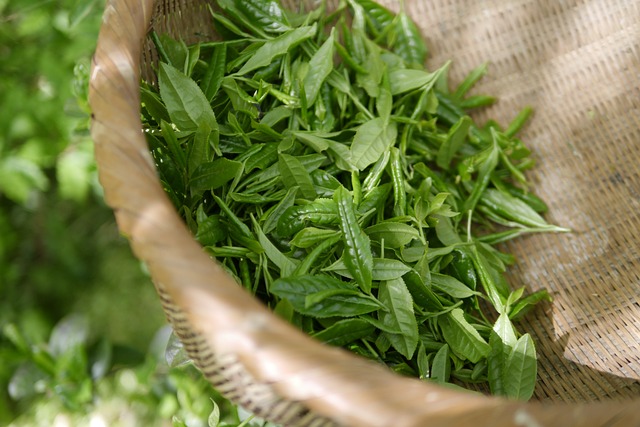Chinese tea culture is a rich tapestry woven with history, tradition, and flavor. For many, what is the tea used in chinese restaurants? sipping tea in a Chinese restaurant isn’t just about quenching thirst; it’s an experience steeped in rituals that date back thousands of years. Whether you’re enjoying dim sum or savoring Peking duck, the right cup of tea can elevate your meal to new heights. But what exactly is the tea used in Chinese restaurants? This question opens up a world of delightful aromas and health benefits waiting to be explored. Join us as we dive into the heart of Chinese tea culture and discover the varieties that grace dining tables across China and beyond.
What is the Tea Used in Chinese Restaurants?
When you step into a Chinese restaurant, the warm aroma of tea often greets you. But have you ever wondered what type of tea is commonly served?
Most restaurants offer Jasmine tea, known for its fragrant floral notes. This is a green tea infused with jasmine flowers, creating an aromatic experience that complements various dishes.
Another popular option is Pu-erh tea. This unique fermented tea has an earthy flavor and offers a depth that pairs wonderfully with rich foods.
Oolong tea also makes appearances on many menus. Its semi-oxidized leaves provide a complex taste profile that can be both fruity and toasty.
Chinese restaurants may also serve Tieguanyin or Iron Goddess of Mercy, another beloved oolong variety characterized by its sweet and creamy texture. Each type not only enhances the meal but reflects the diverse culture behind Chinese cuisine.
Types of Chinese Tea
Chinese tea comes in various types, each offering a unique flavor profile and aroma. The most popular categories include green, black, oolong, white, and pu-erh teas.
Green tea is known for its fresh taste. It’s minimally processed and retains high levels of antioxidants. Dragon Well (Longjing) is a famous variety loved for its sweet notes.
Black tea, or red tea as it’s called in China, has a robust flavor due to the full oxidation process. Keemun is a standout type with rich malty undertones.
Oolong tea bridges the gap between green and black teas. Its partial oxidation creates complex layers of flavor. Tieguanyin offers floral notes that are truly captivating.
White tea is delicate and subtle with fewer processing steps involved. Silver Needle stands out for its light sweetness.
Pu-erh provides an earthy richness through fermentation over time—an experience unlike any other! Each type reflects regional traditions and brewing methods worth exploring.
Health Benefits of Chinese Tea
Chinese tea is more than a delicious beverage; it’s a treasure trove of health benefits. Rich in antioxidants, these teas can help combat oxidative stress and reduce the risk of chronic diseases.
Many varieties, such as green tea, are known to boost metabolism. This makes them popular among those looking to support weight loss efforts without harsh diets or supplements.
Additionally, Chinese tea may enhance mental clarity. The combination of caffeine and L-theanine found in certain types promotes focus while reducing anxiety levels.
Drinking these teas regularly has also been linked to improved heart health. They can help lower cholesterol and support overall cardiovascular function.
Moreover, some studies suggest that specific herbal blends can aid digestion and even strengthen the immune system. With such diverse benefits, incorporating Chinese tea into your daily routine could be a simple yet effective way to nurture your well-being.
How to Properly Brew and Serve Chinese Tea
Brewing Chinese tea is an art that requires attention to detail. Start with high-quality loose leaves for the best flavor experience.
Use a teapot or gaiwan, which allows the leaves to expand fully during steeping. Rinse your tea first by pouring hot water over it and discarding the rinse. This awakens the flavors.
Temperature matters. Different teas require specific temperatures; green teas thrive at around 175°F while oolong prefers about 195°F. Use filtered water for purity and taste.
Steep each type according to its unique needs: green teas need just a minute, while black varieties may take up to five minutes. Adjust these times based on personal preference.
When serving, pour into small cups that allow savoring every sip. Providing warm water alongside can enhance enjoyment as guests replenish their cups throughout the meal, fostering connection and conversation.
The Importance of Tea in Chinese Cuisine
Tea is more than a beverage in Chinese culture; it’s a vital part of the culinary experience. In restaurants, tea complements meals and enhances flavors, creating harmony on the palate.
Each type of tea carries its own significance. For instance, green tea is often paired with lighter dishes to balance richness. Oolong can enhance savory meals, while jasmine tea adds a floral note that elevates dining.
Serving tea during a meal also reflects hospitality and respect for guests. It invites conversation and connection at the table.
Additionally, many chefs believe that certain teas can aid digestion after heavy meals, making them essential not just for enjoyment but for well-being as well.
The ritual of brewing and serving tea embodies tradition too—each step holds cultural importance passed down through generations.
Conclusion: Expand Your Palate with Authentic Chinese Tea
Exploring the world of Chinese tea opens up a rich tapestry of flavors, aromas, and traditions. The tea served in Chinese restaurants is more than just a beverage; it’s an integral part of the dining experience that enhances each meal. By understanding what is the tea used in Chinese restaurants, you can appreciate not only its role but also the cultural significance behind it.
As you venture into different types of teas—from fragrant jasmine to robust oolong—you’ll discover unique health benefits tied to each variety. Learning how to brew and serve these teas properly will elevate your enjoyment and respect for this ancient drink.
If you’re looking for ways to expand your palate, authentic Chinese tea offers a delightful journey through taste and tradition. Embrace this opportunity to explore something new that complements both your meals and overall wellness. Dive into the rich culture surrounding Chinese tea, and let it enrich your culinary experiences beyond measure.












Show Comments